Tang Dynasty - Fei Qian
Fei Qian (飞钱, flying cash) in the Tang Dynasty, the earliest prototype of Chinese paper money.
The New Book of Tang – Recordings of foods and goods contains: “商贾至京师,委钱诸道进奏院及诸军诸使富家,以轻装趋四方,合券乃取之,号飞钱。”
Fei Qian are also called "Bian Huan (便换, convenient exchange)" and "Bian Qian (便钱, convenient money)". In the middle of the Tang Dynasty, the production of copper coins could not meet the market demand, and there were many restrictions on the flow of copper coins. Besides, the carrying and transportation of large amounts of copper coins were also a problem.
So, a new financial method was born. The merchants in the capital sent the money to the Jin Zou Yuan (进奏院, the official statutes of report) which is the office in the capital, and the Jin Zou Yuan issued a ticket for the merchants, with the amount, date, name and other items written on it. And this ticket would be divided into two halves, half sending to the merchant, and another half back to the local. The merchant returned with his half of the ticket to the designated department to exchange for the money, as long as the two halves of the ticket can be matched correctly, they can receive the money.
Northern Song Dynasty - Jiaozi
The Jiaozi (交子, a kind of paper money) in the Northern Song Dynasty, is regarded as the earliest Chinese paper money in ancient China.
The emergence of paper money is of great significance to history. Compared with the general gold, silver, copper, and iron coins, paper money is definitely lighter and more helpful for trade transactions. Chinese paper money first appeared in the Sichuan region in the Northern Song Dynasty, pioneered by local merchants. The emergence of paper money was no accident. During the Northern Song Dynasty, gold was used more for decoration and storage, and silver was used more for reparations, both of which were relatively scarce.
Generally speaking, people used copper coins in their daily life. However, with the gradual development of foreign trade, copper coins gradually flowed out to foreign countries, and the quantity of copper coins in the Northern Song Dynasty declined. To curb this trend, the imperial court prohibited private copper mining by the private sector, and the government monopolized it, but this practice did not help to alleviate the shortage of copper. After the court banned copper mining, there was a shortage of copper for the private sector, so they had to melt the copper coins and cast them into copper items. There were also many folks who chose to store their copper coins, further causing a tight quantity of copper coins in the market.
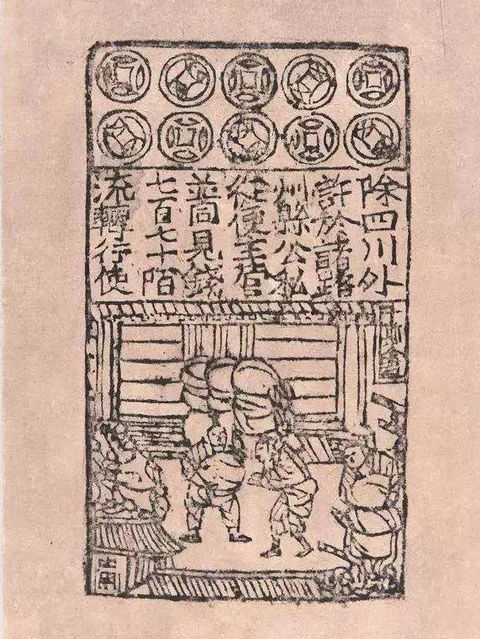
Jiaozi
At that time, Sichuan used iron coins in addition to copper coins to alleviate this problem. Iron coins could be circulated but carrying them was extremely inconvenient. At that time, if someone wanted to buy a piece of cloth, he needed to bring about five hundred pounds of iron money with him. Shopping might not be for buying things but for simply exercising physical strength.
So, sixteen wealthy merchants in the Sichuan region joined together to create the institution of issuing paper money, the "Jiaozi store" (similar to the predecessor of the bank), and issued the earliest paper money in China, "Jiaozi", which was printed by copper plates, with a cipher on it and the amount temporarily filled in. They could be exchanged for cash or used directly for circulation.
However, because of the different quality and poor operation of the Jiaozi stores, they were unable to run their capital well and bankrupted one after another, making it impossible to cash the Jiaozi. The government then seized the power of issuing Jiaozi and set up a state-run "Jiaozi service" in Yizhou (present-day Sichuan), and began issuing official Jiaozi in 1024 AD, thus creating ancient Chinese paper money.
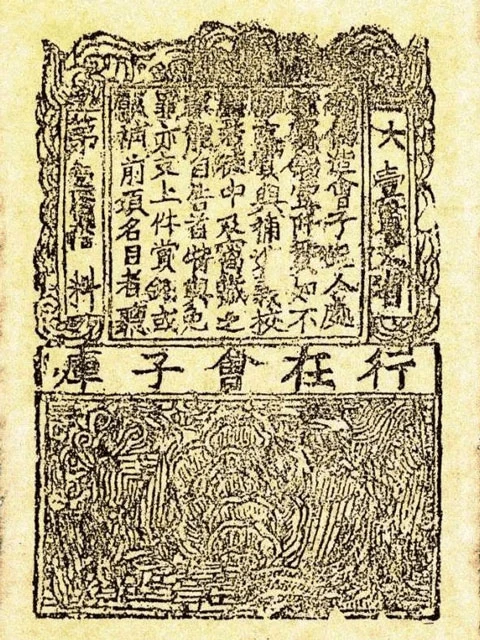
Huizi (会子)
There were different opinions within the Northern Song court about paper money. Opponents believed that it should be banned and not preserved. However, the treasury of the Northern Song was tight and there was a serious financial shortage. Therefore, this crisis could only be alleviated by issuing paper money. This is the beginning of the history of paper money in China, which is very important and cannot be ignored. And after this, the issuance of paper money was basically in the hands of the imperial court.
When the Northern Song Dynasty first issued paper money, a portion of iron money was set aside as "reserve", which was about 28% of the amount of paper money. The paper making technology was poor at that time, and the banknotes were badly worn, so generally, they were replaced once every three years.
In the first year of Emperor Huizong's reign (1107), the Song government changed the name of "Jiaozi" to "Qianyin (钱引, a bill that can exchange for money)", the paper, printing, and seals were also more sophisticated. In the Southern Song Dynasty, the paper money system continued and achieved good results.
All the practices were done to make the paper money itself valuable and usable. This paper money system was maintained for thirty years to ensure the social stability of the Southern Song Dynasty. Later, because of the national conditions of the Southern Song itself and the excessive military expenditure, the court issued a large amount of paper money to make up for the deficit, causing serious social disorder. The value of the banknotes plummeted, and the Qianyin was basically abolished in the Jiading period of the Southern Song Dynasty.
The court used compulsory measures to implement paper money, ignoring the laws of reality, which naturally met with serious backlash and caused civil discontent and serious social unrest. Until the eve of the fall of the Southern Song Dynasty, the situation did not ease, but became more serious.
Yuan Dynasty – Chao
After the Southern Song Dynasty, the Yuan, Ming, and Qing Dynasties all issued paper money, and the paper money issued by the Yuan Dynasty was widely circulated and called "Chao (钞)".
The paper money system of the Yuan Dynasty had the characteristics of modern paper money: no deadline, no limit on the number of years, no limit on the geographical area, the whole country, all taxes, transactions, and sales were made with paper money, and the right to issue paper money belonged exclusively to the central government and was issued and managed by the central government. At this time, not only the banknotes became a circulating currency, but the national monetary policy also affected the development of the national economy more significantly than before.
However, the Yuan Dynasty was not exempt from the exception of hyperinflation. In the late Yuan Dynasty, due to war, and financial and socio-economic relations, the policy of stabilizing the value of money was reversed and the paper money was issued indiscriminately, causing the circulation of paper money to far to exceed the market demand, resulting in hyperinflation rarely seen in China's monetary history and contributing to the demise of the Yuan regime.
Ming Dynasty - The Decline of Chinese Paper Money
During the Ming dynasty, the government issued only one type of banknote "Da Ming Tong Xing Bao Chao (大明通行宝钞)" was issued, and the printing and issuance of treasure banknotes was always concentrated in the central government, and this unity was unprecedented in previous generations. No cashing, no demarcation, no region and circulation time, no issuance limit, no issuance reserve, and no change in the name and shape of the currency, and the currency system is consistent.
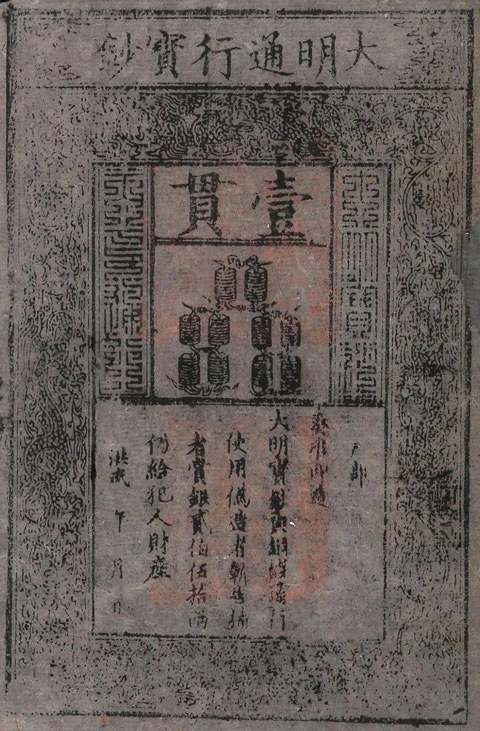
Da Ming Tong Xing Bao Chao
One of the major loopholes in the Ming Dynasty banknote law is its recycling of old banknotes. In the ninth year of Hongwu (1376), the Ming government had enacted the law on recycling of old banknotes, and set up agencies in various places to collect and exchange old banknotes with. Hongwu thirteen years (1380) also stipulated the limits of the exchange of old banknotes, and all those banknotes amounts and text can be recognized, can continue to use, and it is not allowed to raise the price of those who buy with old banknotes. But in fact, the government collects taxes with new banknotes, while private people use or refuse to use old banknotes at a reduced price. This creates a differential price between old and new banknotes, which leads to subsequent inflation.
As a result, Ming Dynasty banknotes have been depreciating in the process of issuance and circulation, and although measures have were taken to maintain the purchasing power of Daming banknotes, but unable to keep it on the verge of withdrawing from the stage of history.
By the time of the Hongzhi period (1488-1505), the banknote was no longer meaningful in the commodity money economy, and in addition, the development of silver mines in the Ming Dynasty was larger than in the previous generation, and a large amount of silver entering China from the worldwide. Because the value of silver itself is relatively stable, it is safer as a currency than paper money, so in 1436 AD, silver became legal money and was used as a circulating currency. Since then, the scope of use of banknotes has become smaller and smaller. During the reign of Emperor Xiaozong, all kinds of banknotes were folded into silver, and the circulation of paper money has existed in name only. People only used silver money for transactions. After the middle of the Ming Dynasty, the banknotes were no longer used.
In view of the various drawbacks caused by the issuance of paper money by the Ming Dynasty, the Qing Dynasty only used coins but not banknotes for a long time. Basically, it is a system in which silver (silver ingots) and copper coins are used together, except for copper coins minted by the government, silver was minted both officially and privately.
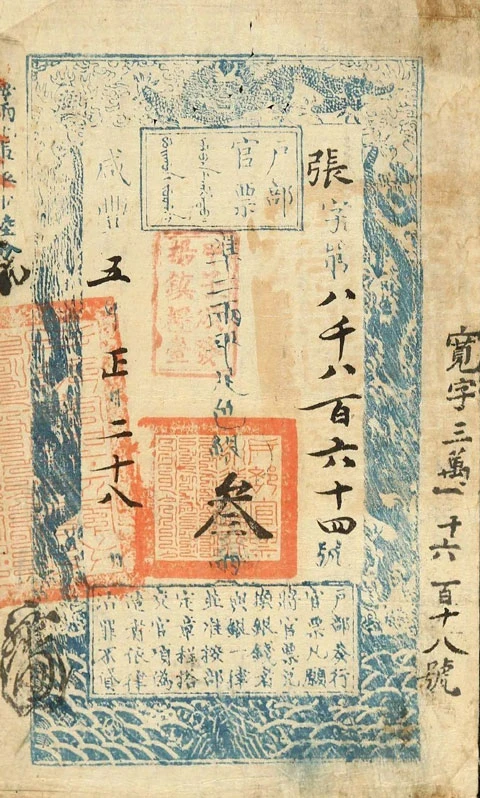
Hubu Guanpiao
In the third year of Xianfeng (1853 AD), due to the outbreak of the Taiping Heavenly Kingdom Revolution, the Qing government recruited troops everywhere in order to suppress the peasant uprising, and when the military expenditure suddenly increased and the government had no way to raise funds, it decided to issue "Hubu Guanpiao (户部官票, Hubu official bills, a kind of bill issued by financial department)" and "Da Qing Bao Chao (大清宝钞, great Qing banknotes)" to provide large amounts and emergency needs.
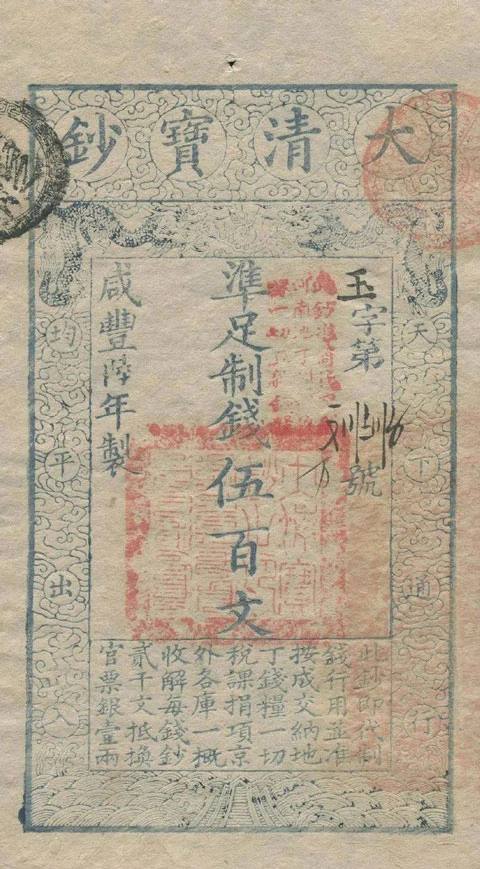
Da Qing Bao Chao
Due to the Qing government's issuance with no reserve arrangement and no collecting back, the merchants refused to use them after they could not redeem the cash. As a result, the issuance was blocked, and later the Qing Dynasty had to allow merchants to use half of the banknotes or official notes in the collocation of silver. Then, the credit of banknotes and bills was lost, and by the Emperor Xianfeng decade, the market value of banknotes and bills in circulation had fallen to only about 2.5% of the par value, almost like waste paper. In the case of the people's refusal, the Qing Dynasty had to stop issuing.
Later, the combination of "Baochao" and "Guanpiao" was called "Chao Piao (钞票)", which is the earliest origin of the term banknote in China.
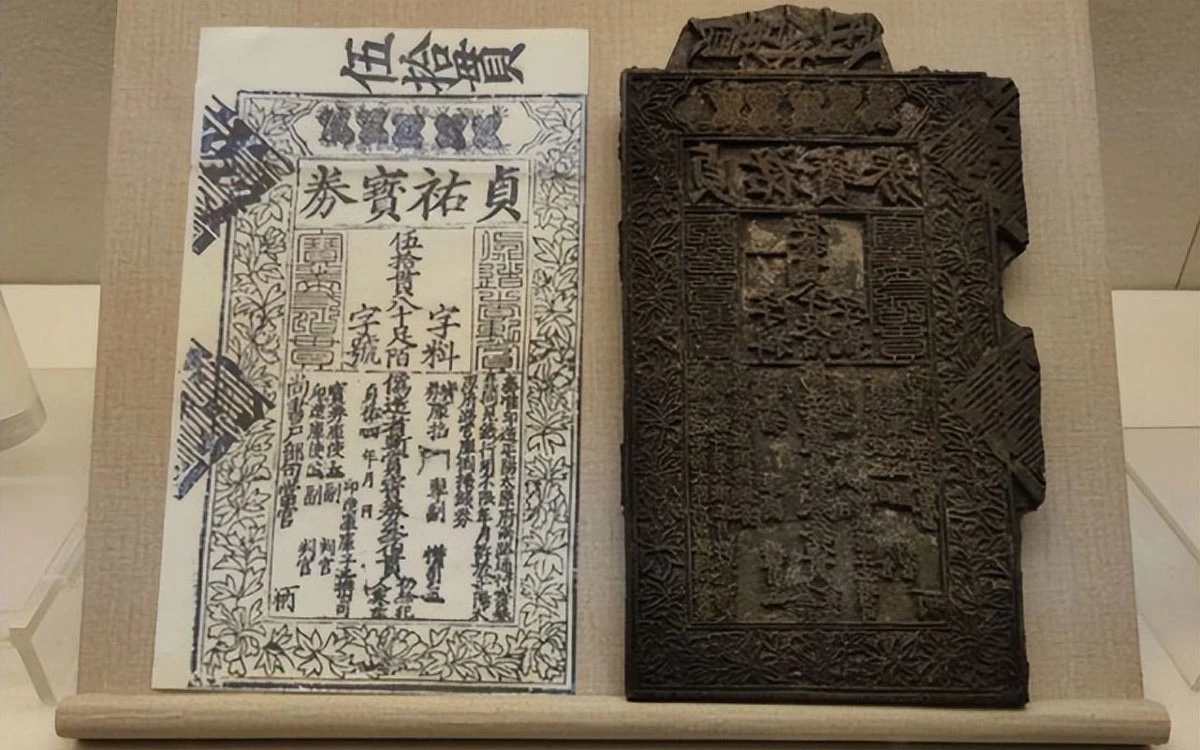
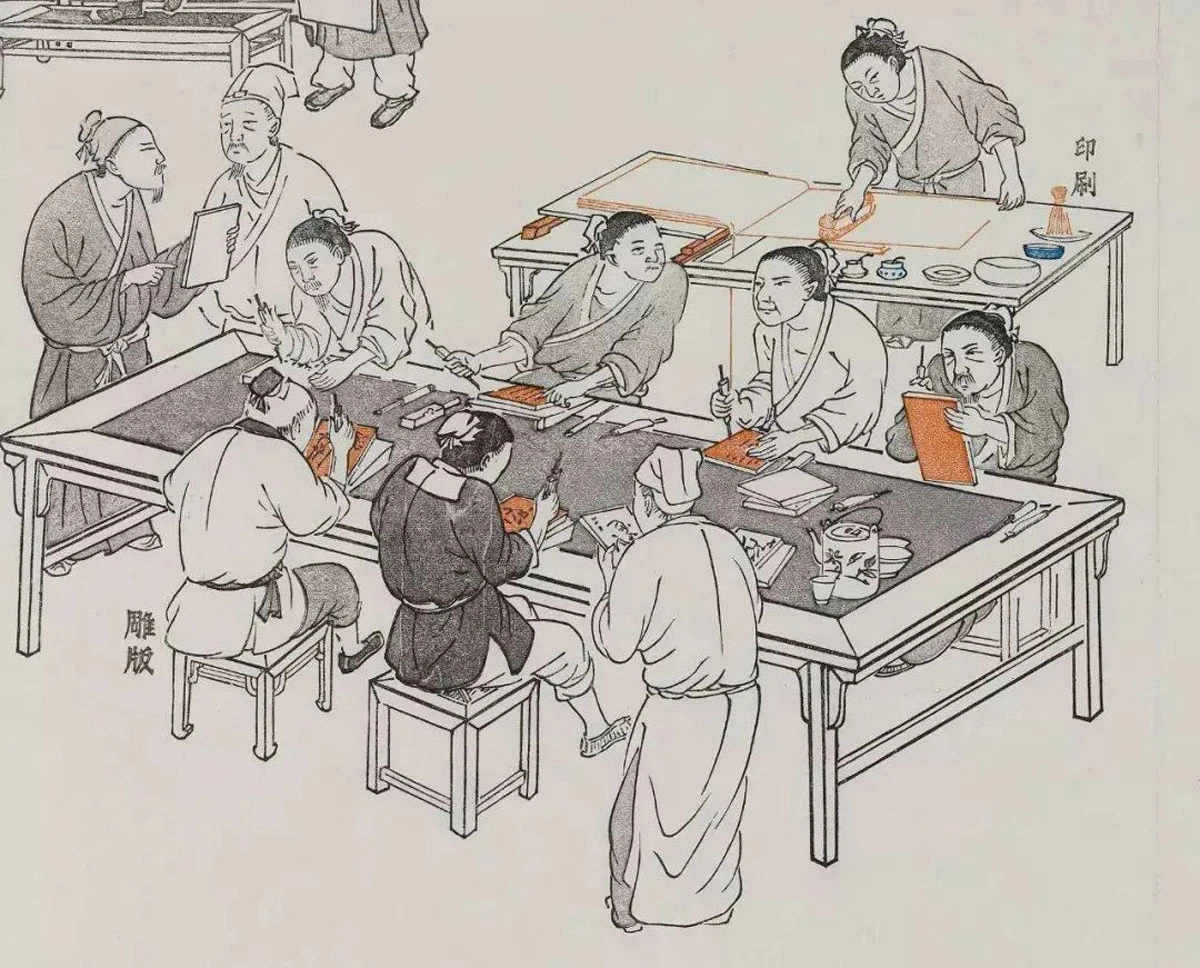

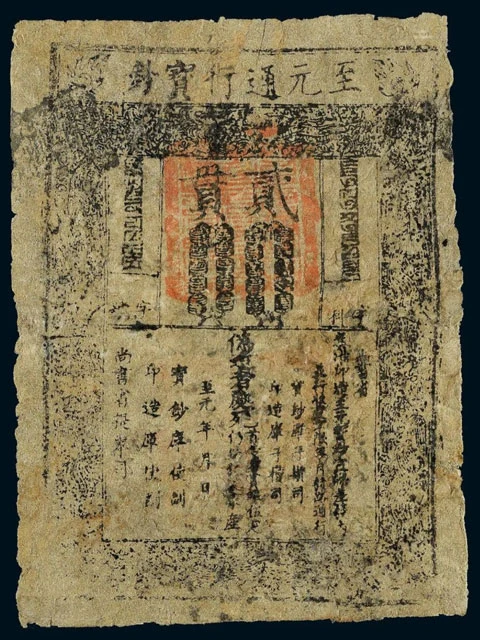
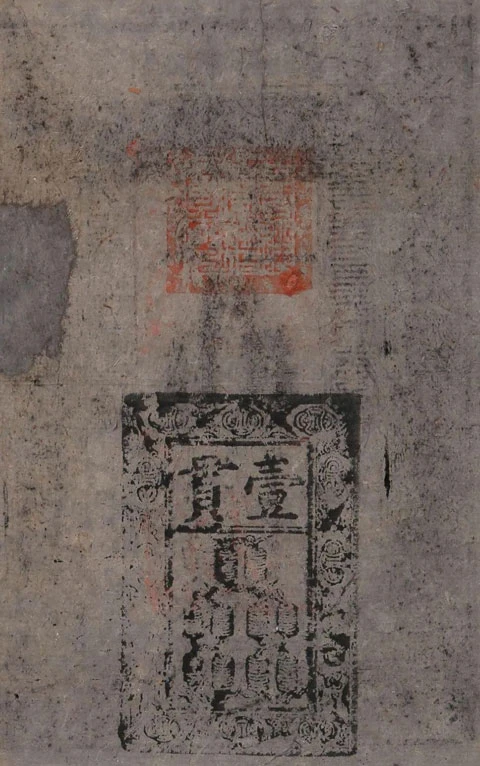


Uang jaman dulu terbuat tambaga apa besi, bayangkan kalo masih ada sampai sekarang. Cukup berat dibawa
Terimakasih artikel nya
Thanks sharing
You said "brief", but that was really detailed, thanks! ^^
Nice article👍👍